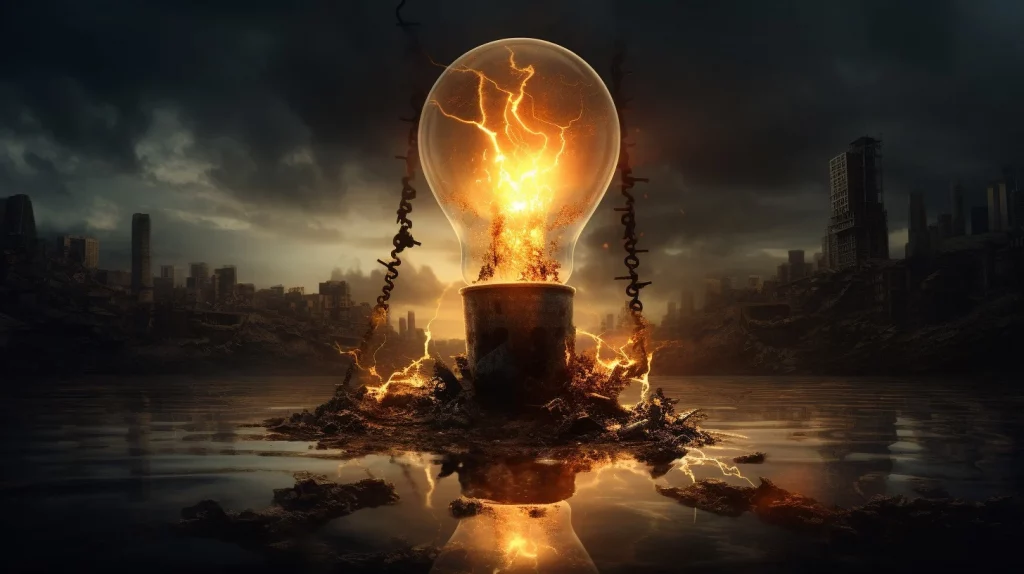“The role of microgrids in hybrid renewable energy systems is becoming increasingly significant as the world continues to shift towards cleaner and more sustainable energy sources.” [Energy Portal]
“Decentralized energy systems are small-scale power generation and storage technologies that produce electricity close to the point of consumption.” [Energy Portal]
.
LOCAL ENERGY:
Why aren’t we talking more about ‘community energy’?
According to the campaign Power for People, the Government intends to bring forward a ‘proposal to empower widespread community energy sector growth.’
Whilst locally, there is the suggestion for wave energy generation for Sidmouth, further plans for Cornish Lithium, a local energy market in Cornwall – and ideas for the new East Devon Local Plan:
It should be up to the Town Council, in consultation with its own residents and with reference to the Neighbourhood Plan, to determine the sites for any large-scale renewable energy schemes; as this is always such a potentially divisive issue, it would be much better to garner support for such schemes locally rather than for them to be seen to be imposed by a higher authority. However, to encourage Town Councils to take responsibility for finding sites, they could be asked to submit an Energy Descent Plan, as developed by the Transition Towns Movement.
INFRASTRUCTURE – AKA PYLONS:
When it comes to local energy production and pylons, there is no escaping the imposition of some sort of ‘infrastructure’- with the successful application for two small wind turbines in the AONB above Sidbury back in 2011:
“Whether we like them or not we are getting used to seeing these things. We co-exist with things in the countryside – pylons, TV aerials, mobile phone masts – we have to live with technology. They are not very elegant but we have to bite the bullet.”
There is quite a debate around local wind farms and solar farms – with the public wanting more of both:
A clear majority of the British public, including Conservative voters, back the development of more onshore wind turbines…
If, then, there is more support for locally-produced energy – why does our energy need to be transported halfway across the country?
The BBC reports on “the looming battle over pylons for green energy” whilst the Mail looks at how “the Net Zero tsar suggests a lump-sum reward to speed up grid improvements amid Tory row over rural power lines”.
It’s not entirely surprising that the Electricity Networks Commissioner Nick Winser is in favour of more massive infrastructure. In a report just out, he says that improving the UK’s energy grid infrastructure and speeding up building is “vital” if net zero targets at to be reached – but not everyone would agree.
Ten years ago, Somerset MP Liam Fox made the point that we need to be looking after our ‘green and pleasant land’:
In many European countries, it is forbidden to build new power lines above the ground — legislation requires electricity transmission lines to go underground. Even newer technologies, such as gas-insulated transmission lines, which provide much lower transmission losses, offer the potential of cheaper underground capabilities… I firmly believe that when we have the technology to improve our infrastructure without damaging the environment, we have a moral duty to do so, so that our green and pleasant land is preserved for the next generation and the generations that follow them.
Meanwhile, former Home Secretary Priti Patel is urging the government to consider offshore cable alternative to pylons.
LOCAL, MICRO, RENEWABLE, DECENTRALISED, RURAL:
Maybe, then, we need to be looking at ‘micro-grids’, rather than massive infrastructure:
The role of microgrids in hybrid renewable energy systems is becoming increasingly significant as the world continues to shift towards cleaner and more sustainable energy sources. Microgrids, which are small-scale power grids that can operate independently or in conjunction with the main electrical grid, are emerging as a key component in the development of hybrid renewable energy systems. These systems combine multiple sources of renewable energy, such as solar, wind, and hydroelectric power, to provide a reliable and continuous supply of electricity. As the global demand for energy continues to grow, microgrids are playing a crucial role in helping to meet this demand while reducing the environmental impact of energy production.
Besides, why does the provision of energy have to be so centralised? What about Decentralized Energy Systems – as is happening in the United States, despite the lobbying of large energy suppliers:
Decentralized energy systems, also known as distributed energy resources (DERs), are small-scale power generation and storage technologies that produce electricity close to the point of consumption. Examples of DERs include rooftop solar panels, small wind turbines, energy storage systems, and electric vehicles. These systems can operate independently or in conjunction with the larger power grid, providing numerous benefits such as reduced transmission losses, increased grid reliability, and lower greenhouse gas emissions.
To finish, the Energy Portal looks at Renewable Energy’s Economic Benefits for Rural Communities:

The influx of renewable energy projects in rural communities represents a unique opportunity for economic growth. Many of these communities are in dire need of such development, and these projects provide a lifeline by bringing new revenue streams and job opportunities. By generating clean energy, these projects not only contribute to fighting climate change but also offer long-term economic sustainability. Moreover, they reduce dependency on fossil fuels, thus enhancing energy security. As we continue to prioritize renewable energy, it is crucial to support and encourage the development of such projects in rural areas. By doing so, we can stimulate local economies, create jobs, and ensure a greener and more prosperous future for all.